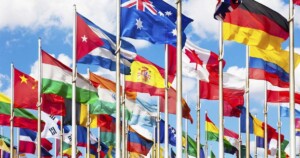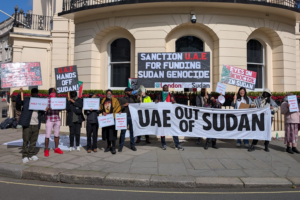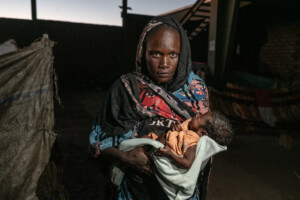Red Cross, Crescent plan for casualties during Sudan’s election
The international aid group expects protests during the general election to result in clashes, and has set up an emergency plan for the polls and their possible aftermath.
The International Federation of Red Cross and Red Crescent Societies (IFRC) expects demonstrations against the upcoming election, scheduled to take place on 13-15 April, to end up in clashes, and has set up an emergency plan for next week and the aftermath of the election.
An Emergency Plan of Action, released on the eve of the 'election silence' period of 11 and 12 April, contains worst-case scenarios and the description of activities for preparing first aid posts and volunteers in a number of 'high-risk states'.
'Given the history of the country and existing political tensions in many areas there is a high risk of violence around the election, as the government continues to ignore opposition calls to postpone the vote and form a transitional government,' the emergency plan of the Disaster Relief Emergency Fund (DREF) supported operation of the IFRC reads.
A scenario set out by Sudanese Red Crescent Society (SRCS) suggested that the election could trigger a major escalation of the existing conflict for weeks after' the conclusion of the election on 15 April.
The states where the IFRC expects the most violence are Khartoum, White Nile, Blue Nile, South Kordofan, West Kordofan, and the five states of Darfur.
Five first aid posts in these states, each with 30 volunteers, are expected to be installed for a period of three months. The volunteering employees currently receive a refresher training, financed from the $185,940.DREF budget.
'It is estimated that 50,000 persons will be affected. The Sudanese Red Crescent Society will provide first aid, evacuation, rescue, and PSS, as it has volunteers all over the ten states of risk.'
Disaster scenarios
The SRCS has prepared three disaster scenarios. It expects that the most likely violence to occur are riots or clashes following protests. In this scenario, the IFRC expects that most casualties will happen in the high-risk states. 'It is estimated that 50,000 persons will be affected. SRCS will provide First Aid assistance, evacuation, rescue, [and] PSS [psycho-social support] as it has volunteers all over the states of risk.'
If the situation turns worse, the IFRC moves to scenario 2, 'loss of lives', and scenario 3, in case of displacement and population movement to neighbouring countries.
The IFRC aims to mobilise over 300 volunteers to assist about 50,000 people, in cooperation with government institutions and the National Election Commission. It will further establish an emergency communication network in its branches, conduct training, and procure dead bodies bags, among other activities.
The partners working in Sudan include the Danish, German, Netherlands, Spanish, Swedish, and Swiss Red Cross, as well as the Iranian, Saudi Arabia, and Qatar Red Crescent.
No support from EU, Sudan Troika
A rally by students against the election in Khartoum on Thursday was dispersed by security forces with tear gas, rubber bullets, and beatings. Other anti-election protests in the capital of Sudan and in the Northern State on Wednesday and Thursday resulted in the detention of a large number of demonstrators.
The European Union has stated that it will not support the Sudanese general election, scheduled to start on Monday. According to the members of the Sudan Troika (Norway, the UK, the US), an environment conducive to a participatory and credible election in Sudan does not exist.











 and then
and then